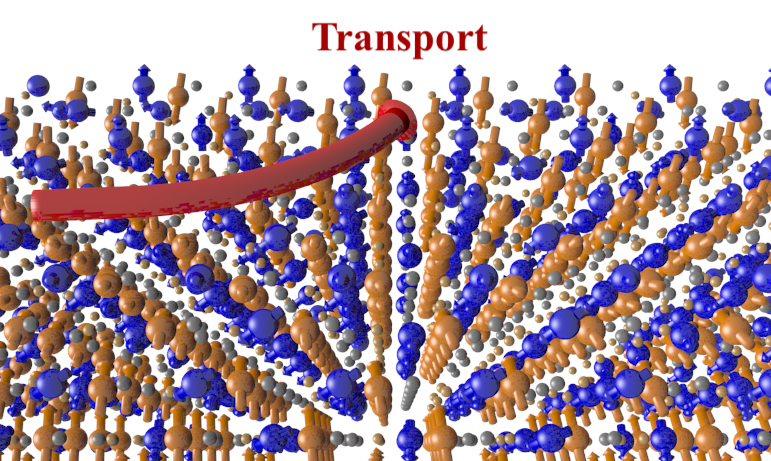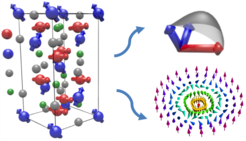
Skyrmionics - A. Markou
A decade ago, the quasiparticle skyrmion, a 2D topological magnetic texture, was experimentally discovered in systems that break inversion symmetry. The alluring magnetic state was predicted only two decades ago and since has burgeoned into many possibilities for new modern technology. This is due to their efficient manipulation, scalability, unique response to perturbations, and the ability to couple to other phenomena in condensed matter physics. Recently, the antiskyrmions were found in the tetragonal Heuslers Mn1.4PtSn and Mn2RhSn, which showed enhanced stability, even at room temperature and the possibility to stabilize in zero magnetic fields.
The skyrmionics group focuses on the Heusler compounds that display a competition of magnetic interactions which allow for noncollinear magnetism to arise. The group must work closely with several of the groups at the MPI CPfS, due to the enriched nature of the compounds with the topological magnetic state. We collaborate with the single crystal and thin film groups, where these magnetic materials show tunability based on the dimensionality of the system. For example, the size of antiskyrmions displays a strong dependence on the thickness of the material. From the theoretical side, we interact daily with the topological theory group, where our systems show many analogs to the topology electronic structure. There is an inherent requirement for magnetic textures to stabilize at finite temperatures, therefore the group also begins to search for the thermoelectric and thermodynamic responses.
The goal of the multifaceted group is to understand 2D and 3D topological magnetic textures in Heusler compounds along with the responses to external perturbations. This is pursued by state-of-the-art theoretical calculations along from a combination of first-principle calculations and classical spin dynamics. We also support the experimental evidence in the visualization and transport responses of these unique magnetic textures. From here, there is a strong possibility to interact with these magnetic states with various quantum materials, such as superconductors and Weyl semimetals.

